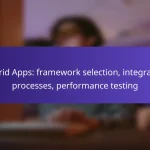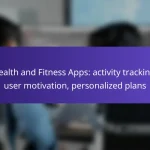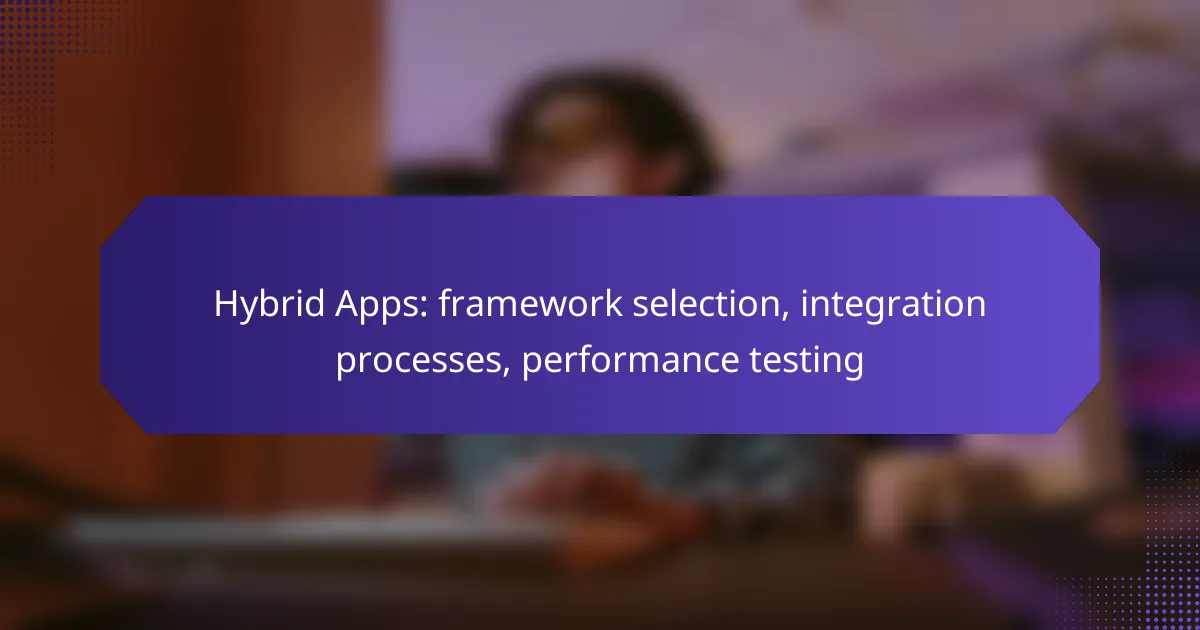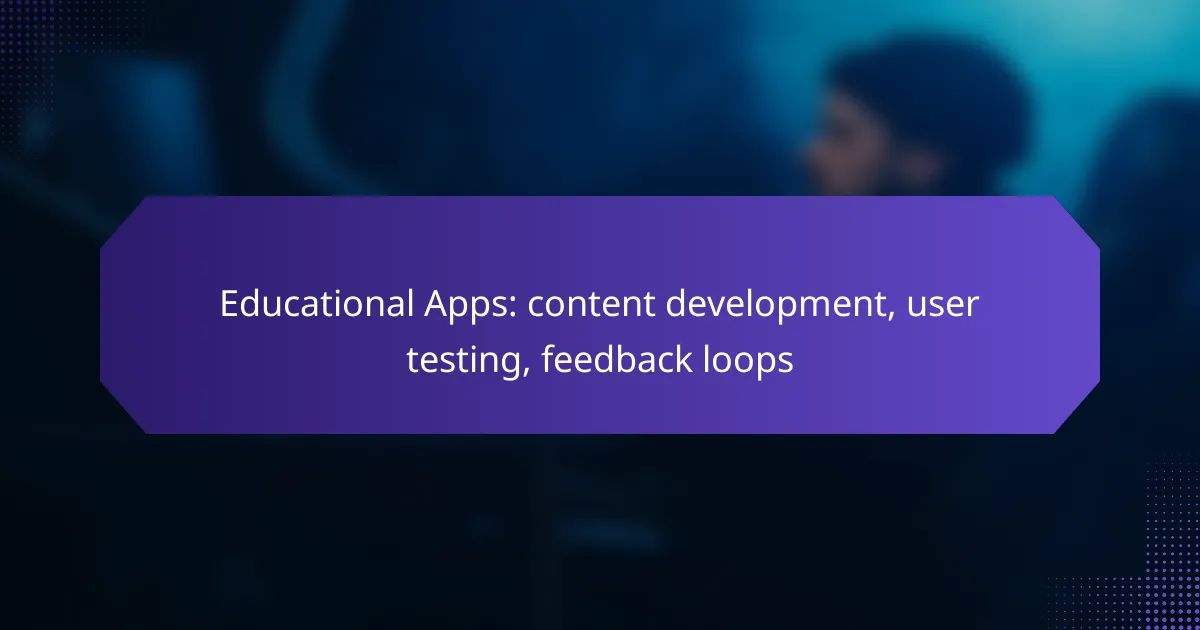Native apps are crafted using platform-specific programming languages, such as Java and Kotlin for Android, and Swift and Objective-C for iOS, which enable optimal performance and access to device features. Adhering to platform guidelines is crucial for ensuring quality and security during app submission and operation. Additionally, effective testing through unit testing, user acceptance testing, and performance testing is essential to guarantee that the app meets user expectations and functions reliably.
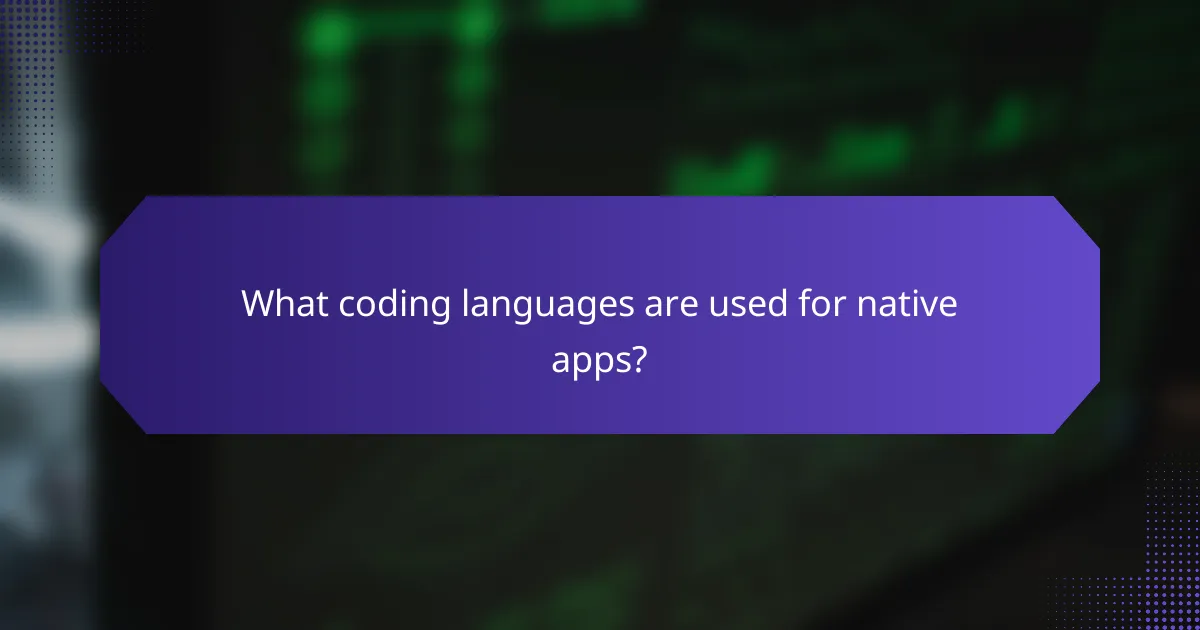
What coding languages are used for native apps?
Native apps are primarily developed using platform-specific programming languages that allow for optimal performance and access to device features. For Android, Java and Kotlin are prevalent, while iOS development typically utilizes Swift and Objective-C.
Java for Android development
Java has been the traditional language for Android app development since the platform’s inception. It offers a robust set of libraries and frameworks that facilitate the creation of feature-rich applications.
When using Java, developers can leverage the Android SDK, which provides tools and APIs for building apps. However, Java can be verbose, which may lead to longer development times compared to newer languages.
Swift for iOS development
Swift is the modern programming language for iOS development, designed to be safe, fast, and expressive. It simplifies many coding tasks and reduces the likelihood of errors compared to its predecessor, Objective-C.
Swift’s syntax is clean and concise, making it easier for developers to read and write code. Additionally, Swift is continually updated, ensuring it remains relevant with the latest iOS features and improvements.
Kotlin as an alternative for Android
Kotlin is an officially supported language for Android development that offers many advantages over Java, such as null safety and extension functions. It allows for more concise code, which can enhance productivity and reduce bugs.
Many developers are transitioning to Kotlin due to its modern features and interoperability with Java. This makes it easier to integrate Kotlin into existing Java projects without a complete rewrite.
Objective-C for legacy iOS apps
Objective-C is the older programming language used for iOS development, primarily for legacy applications. While it has been largely replaced by Swift, many existing apps still rely on Objective-C for maintenance and updates.
Developers working with Objective-C must be familiar with its unique syntax and conventions. While it may not be the first choice for new projects, understanding Objective-C is essential for maintaining older applications effectively.

What are the platform guidelines for native apps in the UK?
Platform guidelines for native apps in the UK are essential rules set by app stores to ensure quality, security, and user experience. Adhering to these guidelines is crucial for successful app submission and operation.
Apple App Store guidelines
The Apple App Store guidelines focus on user privacy, security, and overall app functionality. Developers must ensure their apps comply with Apple’s strict standards, including proper use of APIs, user data protection, and adherence to content policies.
Key considerations include providing a clear privacy policy, avoiding misleading information, and ensuring that apps are stable and free of bugs. Non-compliance can lead to rejection during the review process.
Google Play Store policies
Google Play Store policies emphasize user safety, content appropriateness, and technical performance. Developers should ensure their apps meet requirements related to data security, advertising practices, and user consent.
Common pitfalls include failing to disclose in-app purchases or using deceptive advertising. Regularly reviewing policy updates is essential, as Google frequently adjusts its guidelines to enhance user experience.
Accessibility standards for UK apps
Accessibility standards for UK apps aim to make applications usable for individuals with disabilities. Compliance with the Web Content Accessibility Guidelines (WCAG) is often recommended to ensure inclusivity.
Developers should implement features such as screen reader compatibility, alternative text for images, and adjustable text sizes. Testing with real users who have disabilities can provide valuable insights and help identify areas for improvement.

How to test native apps effectively?
Effective testing of native apps involves a combination of unit testing, user acceptance testing, and performance testing. Each method serves a distinct purpose, ensuring that the app functions correctly, meets user expectations, and performs reliably under various conditions.
Unit testing for code validation
Unit testing focuses on validating individual components of the app’s code. This process helps identify bugs early in development, allowing developers to fix issues before they escalate. Tools like JUnit for Java or XCTest for Swift can automate these tests, ensuring consistent results.
When conducting unit tests, aim for a coverage rate of at least 70-80%. This means that a significant portion of your code is tested, reducing the likelihood of undetected errors. Regularly running these tests during development can save time and resources in the long run.
User acceptance testing for functionality
User acceptance testing (UAT) assesses whether the app meets the needs and expectations of its intended users. This testing phase typically occurs after the app is developed and involves real users interacting with the app to provide feedback on its functionality and usability.
To conduct effective UAT, create scenarios that reflect common user tasks and gather feedback through surveys or interviews. Aim to involve a diverse group of users to capture a wide range of perspectives. Address any issues raised during this phase to enhance user satisfaction before the app’s official launch.
Performance testing for speed and reliability
Performance testing evaluates how well the app performs under various conditions, including load, stress, and scalability. This testing is crucial for ensuring that the app can handle expected user traffic without crashing or slowing down.
Use tools like Apache JMeter or LoadRunner to simulate multiple users and measure response times. Aim for response times in the low tens of milliseconds for optimal user experience. Regularly monitor performance metrics post-launch to address any emerging issues promptly.

What are the prerequisites for developing native apps?
To develop native apps, you need a solid understanding of programming languages specific to the platform, familiarity with platform guidelines, and knowledge of testing procedures. These prerequisites ensure that your app functions smoothly and meets user expectations on devices like smartphones and tablets.
Understanding platform-specific SDKs
Platform-specific Software Development Kits (SDKs) provide the necessary tools and libraries to build native applications for specific operating systems, such as iOS or Android. For instance, Apple’s Xcode includes the iOS SDK, while Android Studio offers the Android SDK. Familiarity with these SDKs is crucial as they contain essential APIs and documentation for app development.
When working with SDKs, pay attention to the updates and changes in the documentation, as these can affect your app’s functionality. Regularly reviewing the latest features and best practices will help you leverage the full potential of the SDK and avoid common pitfalls.
Familiarity with development environments
Being comfortable with development environments is essential for efficient native app development. Integrated Development Environments (IDEs) like Xcode for iOS or Android Studio for Android streamline the coding process, offering features like code completion, debugging tools, and performance analysis. Choosing the right IDE can significantly enhance your productivity.
Consider setting up your development environment according to the best practices recommended by the platform. For example, ensure that you have the latest version of the IDE and that all necessary plugins are installed. This preparation can save time and reduce errors during the development process.

How to choose the right coding language for your app?
Choosing the right coding language for your app depends on various factors, including the target platform, audience, and specific performance needs. Each language has its strengths and weaknesses, making it essential to align your choice with your app’s goals and requirements.
Consider target audience and platform
Your target audience and the platform you choose significantly influence your coding language decision. For instance, if you’re developing an app for iOS users, Swift or Objective-C are the preferred languages, while Android apps typically utilize Java or Kotlin.
Additionally, consider the demographics of your audience. If your app targets a global market, languages that support localization and internationalization features will be beneficial. Understanding where your users are located can also inform your choice, as different regions may have varying preferences for app functionality and design.
Evaluate performance and scalability needs
Performance and scalability are critical when selecting a coding language for your app. If your app requires high responsiveness and low latency, languages like C++ or Rust may be suitable due to their efficiency. For apps expecting rapid growth in user base, consider languages that facilitate easy scaling, such as JavaScript with Node.js for backend services.
It’s also essential to assess how your app will handle increased loads. Using frameworks that support asynchronous processing can improve performance under heavy usage. Regularly testing your app’s performance during development can help identify potential bottlenecks early on.


